
Clay County is a county located in the far western part of U.S. state North Carolina. As of the 2020 census, the county population was 11,089. The county seat is Hayesville.
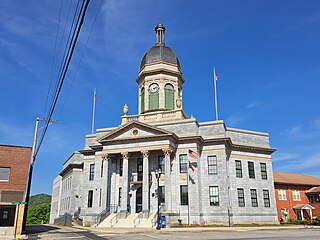
Cherokee County is the westernmost county in the U.S. state of North Carolina. It borders Tennessee to its west and Georgia to its south. As of the 2020 census, the population was 28,774. The county seat is Murphy.
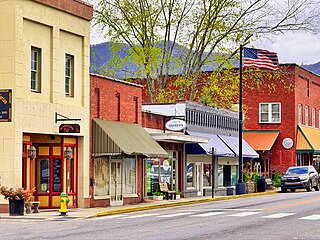
Andrews is a town in Cherokee County, North Carolina, United States. The population was 1,667 at the 2020 census.
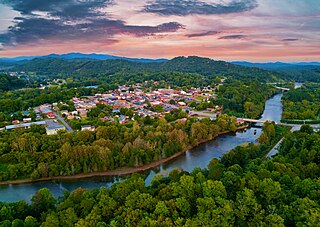
Murphy is a town in and the county seat of Cherokee County, North Carolina, United States. It is situated at the confluence of the Hiwassee and Valley rivers. It is the westernmost county seat in the state of North Carolina, approximately 360 miles (580 km) from the state capital in Raleigh. The population of Murphy was 1,608 at the 2020 census.

Hayesville is a town in Clay County, North Carolina, United States. The population was 311 at the 2010 census. It is the county seat of Clay County.
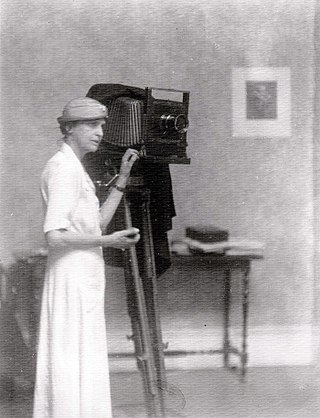
Doris Ulmann was an American photographer, best known for her portraits of the people of Appalachia, particularly craftsmen and musicians, made between 1928 and 1934.
Francis Whitaker was a blacksmith in Carmel-by-the-Sea, California, where he established The Forge in the Forest. He had The Mountain Forge, in Aspen, Colorado, which he later relocated when he was named an artist-in-residence at the Colorado Rocky Mountain School in Carbondale, Colorado.

Songcatcher is a 2000 drama film directed by Maggie Greenwald. It is about a musicologist researching and collecting Appalachian folk music in the mountains of western North Carolina. Although Songcatcher is a fictional film, it is loosely based on the work of Olive Dame Campbell, founder of the John C. Campbell Folk School in Brasstown, North Carolina, and that of the English folk song collector Cecil Sharp, portrayed at the end of the film as professor Cyrus Whittle. The film grossed $3 million in limited theatrical release in the United States, which was generally considered as a respectable result for an arthouse film release in 2001.

John Charles Campbell was an American educator and reformer noted for his survey of social conditions in the southern Appalachian region of the United States during the early 1900s. He served a term as president of Piedmont College from 1904 to 1907.

Olive Dame Campbell (1882–1954) was an American folklorist.
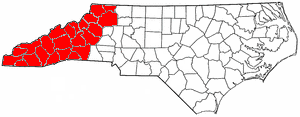
Western North Carolina is the region of North Carolina which includes the Appalachian Mountains; it is often known geographically as the state's Mountain Region. It contains the highest mountains in the Eastern United States, with 125 peaks rising to over 5,000 feet in elevation. Mount Mitchell at 6,684 feet, is the highest peak of the Appalachian Mountains and mainland eastern North America. The population of the 23 most commonly associated counties for the region, as measured by the 2020 U.S. Census, is 1,149,405. The region accounts for approximately 11% of North Carolina's total population.

Southern Highland Craft Guild is a guild craft organization that has partnered with the National Park Service for over seventy years. The Guild represents over 800 craftspeople in 293 counties of 9 southeastern states. It operates four retail craft shops and two annual craft expositions which represent the Guild members' work. These expositions occur in July and October and have taken place in the Appalachian mountain region since 1948.
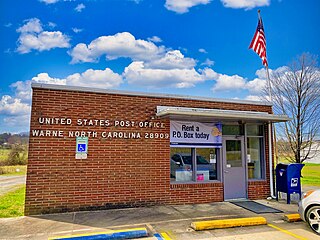
Warne ( "worn") is an unincorporated community in Brasstown Township, Clay County, North Carolina, United States. In 2010, Clay County was the fourth least populated county in North Carolina, inhabited by approximately 10,587 people. The region has added considerably to its population, a 20.6% increase since 2000. Warne is closer to the capitals of five other states than to Raleigh, the capital of North Carolina.

The Cherokee Scout is a weekly newspaper in Murphy, North Carolina, and Cherokee County. It is one of the largest newspapers in far-west North Carolina.
Settlement schools are social reform institutions established in rural Appalachia in the early 20th century with the purpose of educating mountain children and improving their isolated rural communities.

Marble is an unincorporated community and census-designated place (CDP) in Cherokee County, North Carolina, United States. As of the 2010 census it had a population of 321.

Amanda Crowe was an Eastern Band Cherokee woodcarver and educator from Cherokee, North Carolina. A graduate of the School of the Art Institute of Chicago, her work has been widely exhibited and is held by a number of museums. Crowe dedicated much of her career to teaching and training the next generation of Eastern Cherokee artists.

Brasstown is an unincorporated community located mostly within Clay County, North Carolina, United States, though roughly one third of Brasstown is within the adjacent Cherokee County. Brasstown Creek travels through the community and separates the two counties.
Bellview is an unincorporated community in Cherokee County, in the U.S. state of North Carolina. It is part of Notla Township, and is located immediately north of the Georgia border, about 10 miles south of Murphy, NC. Its average elevation is 1800 feet above sea level. U.S. Route 19 is the main highway through Bellview.

Peachtree is a community located in Cherokee County, North Carolina. It is named after the numerous peach trees found in the area. The local schools are Peachtree Elementary School, Murphy and Andrews Middle School, and Murphy and Andrews High School.
















































